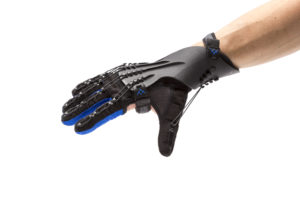Stroke Plateaus are Not Permanent
NeuroRehab Team
Friday, November 18th, 2022
Hand Function SplintsNeuroplasticity
There is no expiration date on neuroplasticity.
Just like athletes and musicians, many stroke survivors will have periodic and temporary plateaus or setbacks as they continue to improve. It is a back-and-forth process. Improve a little, then a plateau occurs. Modify the training and improve some more. Then, here comes another plateau. Modify again. You get the idea.
This “climbing up the recovery ladder” process is like improving your golf swing or learning how to play an instrument.
SIDE NOTE: Remember when Tiger completely redid his golf swing? Plateaus are real and will occur.
Many will change up their practice routine to push through to climb another rung in the ladder. So where are we going with this? Recent advances in clinical research have shown that repetitive task training improves arm and hand function in stroke survivors suffering from MILD to MODERATE impairment.
Unfortunately, Individuals with more SEVERE weakness are unable to benefit from similar powerful treatment principles due to lack of movement. This inevitably leads to a term called “learned-nonuse” which means failure to use the affected limb. Without movement, there is no chance for recovery. Basically, here comes a plateau.
So, how can we help stroke survivors take advantage of what the research wants us to do? How do we reverse course, break through a plateau and get their hand back in the game? Occupational therapists received orthotic training in school and should understand the rationale behind selecting appropriate static and dynamic orthoses based on the client’s condition. A tenodesis splint would make sense for a patient who suffered a spinal cord injury. An ankle foot orthosis (AFO) makes sense for a patient with foot drop. A dynamic hand orthosis will allow severely impaired hemiparetic patients to take part in purposeful task training.

Simply put, it’s taking a non-functioning hand and allowing it to grasp and release again. With solutions commercially available (and taught in OT schools), there is no excuse for patients to leave “empty-handed” when it comes to functional orthoses. This will no doubt lead to a plateau and will require the patient (and therapist) to modify, like an athlete or musician, to break through and improve some more.
Patients: If spasticity is preventing you from using your hand, get with a therapist who is knowledgeable with dynamic finger extension assist orthoses. You will be engaging your hand and your brain will thank you for it.
Therapists: If you are currently not adding a neuro-based finger extension splint in your tool bag, ask yourself why? Treating clients with mild to moderate hemiparesis is hard. Treating severely impaired hemiparetic clients is even harder. Now is NOT the time to say, “Sorry Mrs. Jones, there is nothing more I can do for you as no further progress can be made”. There is no expiration date on neuroplasticity so let’s keep driving changes and help your clients climb one more rung!
Click here to learn more about stroke therapy solutions.


Leave a Reply
You must be logged in to post a comment.